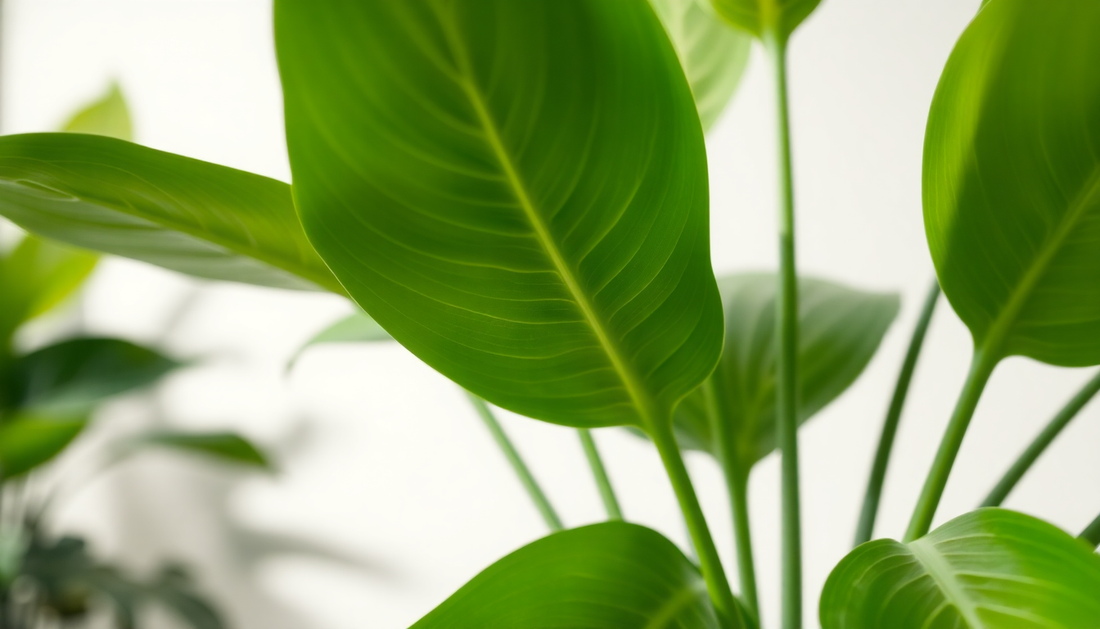
Banish the White Powder: Keeping Your Indoor Plants Pristine
As a passionate indoor gardener, I've encountered my fair share of challenges when it comes to maintaining the health and vitality of my beloved plants. One of the most common issues I've faced is the dreaded white powder that can accumulate on the leaves of my indoor plants. This unsightly and potentially harmful condition, known as powdery mildew, can be a real nuisance, but with the right knowledge and techniques, it can be effectively managed.
Understanding Powdery Mildew
Powdery mildew is a fungal disease that affects a wide range of plants, both indoors and outdoors. It manifests as a white, powdery-looking growth on the leaves, stems, and even flowers of the affected plants. This fungus thrives in warm, humid environments, making it a common problem for indoor gardeners.
The fungus responsible for powdery mildew is known as Erysiphales, and it spreads through airborne spores that can easily find their way into your indoor growing space. Once established, the fungus can quickly spread, causing significant damage to your plants if left unchecked.
Identifying the Culprit
The first step in tackling powdery mildew is to correctly identify the problem. Look for the telltale white, powdery growth on the leaves and other plant parts. This growth can start as small, isolated patches and quickly spread to cover the entire surface of the leaves.
In addition to the visible signs, you may also notice other symptoms, such as stunted growth, yellowing leaves, and a general decline in the plant's overall health. If left untreated, powdery mildew can weaken the plant, making it more susceptible to other pests and diseases.
Preventing Powdery Mildew
The best way to deal with powdery mildew is to prevent it from occurring in the first place. Here are some effective strategies to keep your indoor plants healthy and free from this fungal infection:
Maintain Optimal Growing Conditions
Powdery mildew thrives in warm, humid environments with poor air circulation. Ensure that your indoor growing space has adequate ventilation and that the humidity levels are not too high. Aim for a relative humidity of around 40-50% and maintain a consistent temperature between 65-75°F (18-24°C).
Practice Good Hygiene
Regularly clean and disinfect your growing area, including any tools or equipment you use. Remove any affected leaves or plant parts and dispose of them properly to prevent the spread of the fungus.
Choose Resistant Varieties
When selecting plants for your indoor garden, opt for varieties that are known to be more resistant to powdery mildew. Some common examples include African violets, begonias, and certain types of succulents.
Maintain Proper Watering Practices
Avoid overwatering your plants, as excess moisture can create an environment that is conducive to the growth of powdery mildew. Water your plants at the base, avoiding getting the leaves wet, and allow the soil to dry out slightly between waterings.
Provide Adequate Air Circulation
Good air circulation is crucial in preventing powdery mildew. Use fans or open windows (if possible) to ensure that the air in your growing space is constantly moving, which can help inhibit the spread of the fungus.
Treating Powdery Mildew
Despite your best preventive efforts, you may still encounter powdery mildew on your indoor plants. When this happens, it's important to act quickly to contain the problem and prevent it from spreading further.
Mechanical Removal
One of the simplest and most effective ways to treat powdery mildew is to physically remove the affected leaves or plant parts. Use a clean, damp cloth or paper towel to gently wipe away the white, powdery growth, being careful not to spread the spores to other parts of the plant.
Baking Soda Solution
A homemade baking soda solution can be an effective and eco-friendly way to combat powdery mildew. Mix 1 teaspoon of baking soda with 1 quart (1 liter) of water, and spray the affected areas of the plant. The baking soda helps to disrupt the fungus and prevent it from spreading.
Horticultural Oils and Fungicides
For more severe cases of powdery mildew, you may need to use a commercial fungicide or horticultural oil. These products are designed to target and eliminate the fungus, helping to restore the health of your plants. Always follow the manufacturer's instructions carefully when using these products.
Improve Air Circulation
As mentioned earlier, good air circulation is crucial in preventing and treating powdery mildew. If you're dealing with an active infection, consider using a fan or opening windows (if possible) to increase air movement and help dry out the affected areas.
Maintaining Healthy, Vibrant Indoor Plants
Dealing with powdery mildew can be a frustrating experience, but with the right knowledge and a proactive approach, you can keep your indoor plants healthy and thriving. By understanding the causes, implementing preventive measures, and taking swift action when necessary, you can banish the white powder and enjoy the beauty and benefits of your indoor garden for years to come.
Remember, every indoor gardening journey is unique, and what works for one plant may not work for another. Be patient, experiment, and don't be afraid to seek advice from experienced gardeners or local plant experts. With a little dedication and the right strategies, you can keep your indoor plants looking their best, free from the unsightly and potentially harmful effects of powdery mildew.
Happy gardening!







No comments